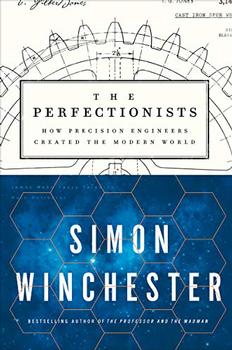Summary | Excerpt | Reviews | Beyond the book | Read-Alikes | Genres & Themes | Author Bio

How the World Became Obsessed With Time
by Simon GarfieldAs managing time becomes the greatest challenge we face in our lives, this multi-layered history helps us tackle it in a sparkling new light.
Not so long ago we timed our lives by the movement of the sun. These days our time arrives atomically and insistently, and our lives are propelled by the notion that we will never have enough of the one thing we crave the most. How have we come to be dominated by something so arbitrary?
The compelling stories in this book explore our obsessions with time. An Englishman arrives back from Calcutta but refuses to adjust his watch. Beethoven has his symphonic wishes ignored. A moment of war is frozen forever. The timetable arrives by steam train. A woman designs a ten-hour clock and reinvents the calendar. Roger Bannister becomes stuck in the same four minutes forever. A British watchmaker competes with mighty Switzerland. And a prince attempts to stop time in its tracks.
Timekeepers is a vivid exploration of the ways we have perceived, contained and saved time over the last 250 years, narrated in the highly inventive and entertaining style that bestselling author Simon Garfield is fast making his own.
This lively tour through the "practical rather than ethereal applications of time" is full of many amazing delights...Garfield inspires a new way of looking at time with Timekeepers; a deeper, more curious look, and in that way he helps us make our worldviews wider...continued
Full Review
(596 words)
This review is available to non-members for a limited time. For full access,
become a member today.
(Reviewed by Rory L. Aronsky).
Simon Garfield's Timekeepers, is a book about our obsession with time. It is chock filled with the ways our lives revolve around it, the instruments we use to manage it, and some people's odd perspectives on it. Here are five quirky, fun facts from the book:
 1. The Oxford English Dictionary keeps a list of frequently used nouns. The word life comes in at #9, year at #3, month is all the way down at #40. Time comes in at #1.
1. The Oxford English Dictionary keeps a list of frequently used nouns. The word life comes in at #9, year at #3, month is all the way down at #40. Time comes in at #1.
2. A paragraph from Timekeepers that must be seen to be believed:
A set of timekeeping instructions issued in August 1853 by W. Raymond Lee, the superintendent on the Boston and Providence Railroad, laid bare the complexities, and the propensity for human error. In part, it reads like a Marx Brothers script:...
This "beyond the book" feature is available to non-members for a limited time. Join today for full access.

If you liked Timekeepers, try these:

Around the World in Eighty Games
by Marcus du Sautoy
Published 2024
An award-winning mathematician explores the math behind the games we love and why we love to play them.

by Simon Winchester
Published 2019
The revered New York Times bestselling author traces the development of technology from the Industrial Age to the Digital Age to explore the single component crucial to advancement - precision - in a superb history that is both an homage and a warning for our future.